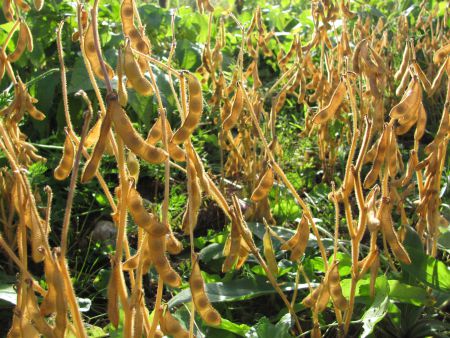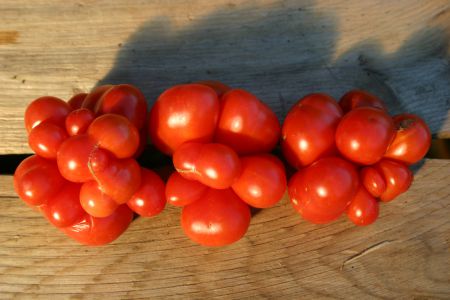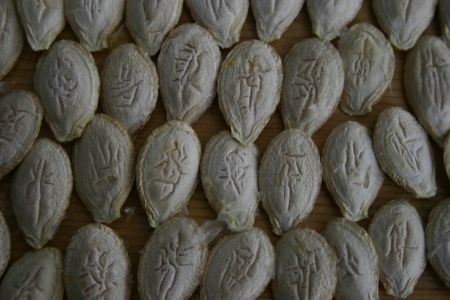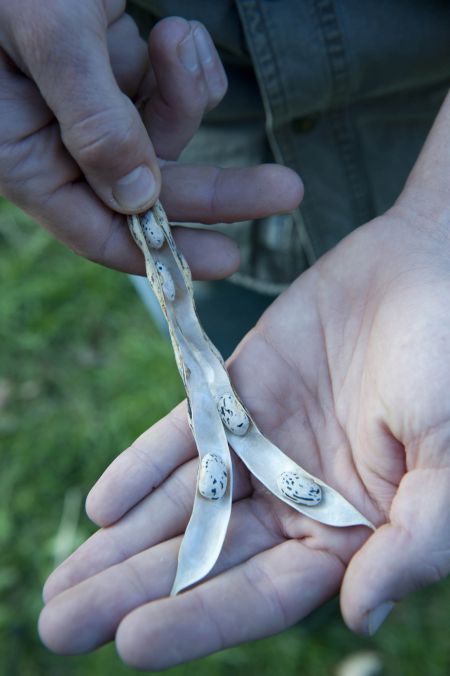Embodied in each seed are thousands of years of co-evolution between humanity and our plant allies. It was that first act of saving and selecting edible wild seeds that allowed us to settle down and farm in our Neolithic past. In the millennia that have passed since, millions of farmers in millions of places have grown and selected and saved seeds from their best plants. Certain varieties became adapted for warm microclimates, other varieties adapted to cool ones. An ancient farmer in the Andes would have had a particular Bean or a Quinoa variety ideally suited to growing in the fertile garden by the village, and another variety suited to growing on that dry northern slope outside town. The neighbouring village down the mountain would have different soil and elevation and growing conditions, and would likely have grown a whole new set of varieties.
Through saving countless seeds in so many places, we guided the process of natural selection towards the enormous range of traits and tastes and diversity we have among food plants today. By some estimates, there are over 30,000 tomato varieties in existence around the world, and similar numbers of beans and grains and other crops.
The cyclical dance between farmer and seed has been steadily increasing diversity. But a very recent thing has happened which threatens that agricultural inheritance: for the most part, we’ve stopped saving our seeds! Starting in the mid-20th century, we’ve allowed control of the seed to slip from the hands of the people into the hands of agribusiness.
Rather than seeds saved and exchanged between growers – seeds that are truly adapted to their environment – we’re reliant on a consolidated seed industry which offers the same seed to everyone, replacing thousands of varieties with just a few.
Often, a single huge grower in Oregon or California or farther afield will produce nearly the entire continent's supply of a certain variety, supplying most of the mainstream seed houses in North America with the exact same seed. Such a centralized system is putting all our eggs in one basket when it comes to crop failures or contamination issues.
Increasingly, we’re stuck relying on seeds specifically designed not to be saved, such as hybrid seeds which won’t breed true to type or even seeds patented by their breeders so as to make propagating them illegal. That’s without even mentioning the prevalence of genetically modified seeds with genes inserted from unrelated species (though you’re not likely to find those in garden seed catalogues yet).
There’s a lot of power in seeds. It’s been said that whoever controls the seed controls food, and whoever controls food controls the world. The reality is that we still have a great wealth of bio-diverse seed available to us, and their power can be in our hands if we want it to be! We simply need to grow them and save them! Learn to grow food and save seeds, discover your own favourite varieties and become familiar with their traits and personalities. If every gardener and farmer saved and maintained just one variety, we’d have no need to worry about losing our diversity of seeds.
Everyone who grows food can be a seed saver. It’s a very simple extension of regular growing. The plants know how to reproduce; you just have to let them complete their life cycle and be there at the right time to collect the seeds.
Start off with open-pollinated or heirloom varieties. These are the “people’s seeds” that come true from year to year, and when saved and selected will adapt to your particular conditions over time. In contrast, there are F1 hybrids, which are a first generation cross between two open-pollinated varieties. Hybrids have certain benefits (mainly increased vigour in the first generation), but usually the second generation isn’t stable, forcing you to go back to the seed company for more.
A few particularly easy crops to begin saving seeds with are beans, peas, tomatoes and lettuces. What makes these ones easy is they have self-fertile flowers, so cross-pollination between varieties is quite rare and you don’t need to worry about large isolation distances.
Beans and peas are both very easy to grow, and their seed saving technique are really similar. You simply let the pods mature on the plant well past the fresh eating stage until they’re crispy and brown, and then you crack them open to get the seeds inside. Easy! It was the amazing array of colours and forms of dry beans that first got me excited about seed saving as a kid.
Lettuce produce their seeds quite differently. As a food crop, lettuce thrives in cool weather, and once the summer heat arrives, it triggers the plants to bolt and flower. Each plant can grow to about three feet in height, with a beautiful umbel of hundreds of yellow flowers. Each flower develops into a fluffy seedhead of 10-15 dandelion-like seeds... and as soon as their fluff fully develops they’re ready to be collected. From just a few plants, you can get thousands of seeds – probably enough for multiple seasons.
Tomatoes are an exciting process! The very simplest method would be to scoop a few seeds out of a fully ripe tomato and dry them on a paper towel. Those would likely grow, but if you’ve noticed each fresh seed has a layer of gel around it. That gel contains enzymes which inhibit germination (can’t have seeds sprouting inside the fruit!) so to get the best germination rate you can ferment them. Take really ripe tomatoes from your best plants, and squish them up unto a bucket or a mason jar. Add just enough water to cover the tomatoes, and let it sit somewhere warm for 3-4 days (with a lid!). After that time you should have a nice mold layer on top, and something amazing has happened underneath. The skins and pulp will have floated to the surface, and all the fertile seeds will have sunk to the bottom, and their gel coatings will have removed themselves. Now just drain off the water and pulp, and give the seeds a few rinses to get them clean. Spread the seeds to dry on a tray or paper towel and you’ve got top notch tomato seeds!
For anyone interested in learning more in-depth seed saving techniques, we frequently have workshops in the summer and fall at our farm. Keep an eye on our website (www.annapolisseeds.com) for details. We also hold Tomato Fest at our farm in early September, a free tomato tasting and open farm event to which you're all invited!
Owen Bridge is the creator and owner of Annapolis Seeds.






